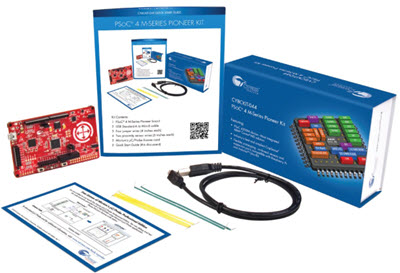
|
For novel ideas about building embedded systems (both hardware and firmware), join the 35,000 engineers who subscribe to The Embedded Muse, a free biweekly newsletter. The Muse has no hype and no vendor PR. Click here to subscribe.
|
On August 12, 1981, thirty years ago this week, IBM introduced the PC, the machine that started putting computers in everyone's hands.
Sure, long before the PC "personal computers" existed. 1977 saw the introduction of Tandy's TRS-80, the Commodore PET, and Apple II computers. The Altair 8800 came even earlier. All sorts of CP/M machines populated the shelves of computer stores throughout the late 70s.
But IBM's PC completely changed the equation. It wasn't long before PC-architecture machines running DOS completely displaced the CP/M empire. The Z80 and 6502 machines gave way to 8088 and, later, x86 machines. Even to this day we live with that legacy. Apple has more money than the US Government, according to one report I heard, but their market share pales compared to PC-class machines. Linux and Apple OSes are vaguely popular, but Windows representing nearly 90% of desktop operating systems.
Less than a year later after the PC the first clones appeared. Compaq debuted their portable machine in November of 1982.
The original IBM PC ran at a blistering 4.77 MHz. A hard disk was not included, and even floppies were expensive options. The default configuration had 16 KB of RAM and required a user-supplied cassette tape for mass storage. Monitors were optional as the computer could drive a TV set.
I bought one as soon as they became available, though as I recall had to wait a couple of months since demand was so high. I believe the cost was about $7k (that's about $17k in today's dollars), though that included two floppies and 64KB of RAM.
In 1952 Howard Aiken said: "Originally one thought that if there were a half dozen large computers in this country, hidden away in research laboratories, this would take care of all requirements we had throughout the country." Today there are over a billion in use world-wide, with another third or so of a billion being shipped each year.
Almost exactly a decade after the PC's debut, on August 6, 1991, Tim Berners-Lee posted the first public description of the world wide web on the Internet. The ideas were not new; hypertext links had been proposed long before. But the WWW was destined to be the implementation that shook the world.
Today there are over a trillion unique URLs and more than 100 million web sites exist. Berners-Lee had envisioned a web of connected documents, but the reality surely exceeds even his wildest dreams.
Early on a friend demonstrated the web to me. Though there were only a handful of sites available I was stunned, and within a few months had put up my first web page (which still exists, though now at URL https://www.ganssle.com/jack/ostar1.html). Though we had been using the "Internet" for some time, it was really only useful for techies who were willing to use arcane programs like gopher and text-based email clients. But the Web was clearly going to bring the average person online.
We've had the web only for twenty years; probably only for a decade has it been the universal resource we now depend on. Yet it's hard to imagine how we functioned without it. There was a time when acquiring knowledge meant a trip to the library, when airline tickets were booked by specialists, when encyclopedias cost money - a lot of money. Publishing was for folks who were recognized as authors, and opinions were expressed in a special section of a bit of foolscap known as the newspaper. Prior to the WWW distributors showered databooks on engineers. Now they're all PDFs that are just a click away.
For my entire career I've heard engineers - always young engineers - complain that there were no new products to invent, no new killer ideas. The trillion URLs represent exactly zero percent of the infinite number of possible URLs, many of which could link to the Next Great Thing.
Published May 27, 2011


